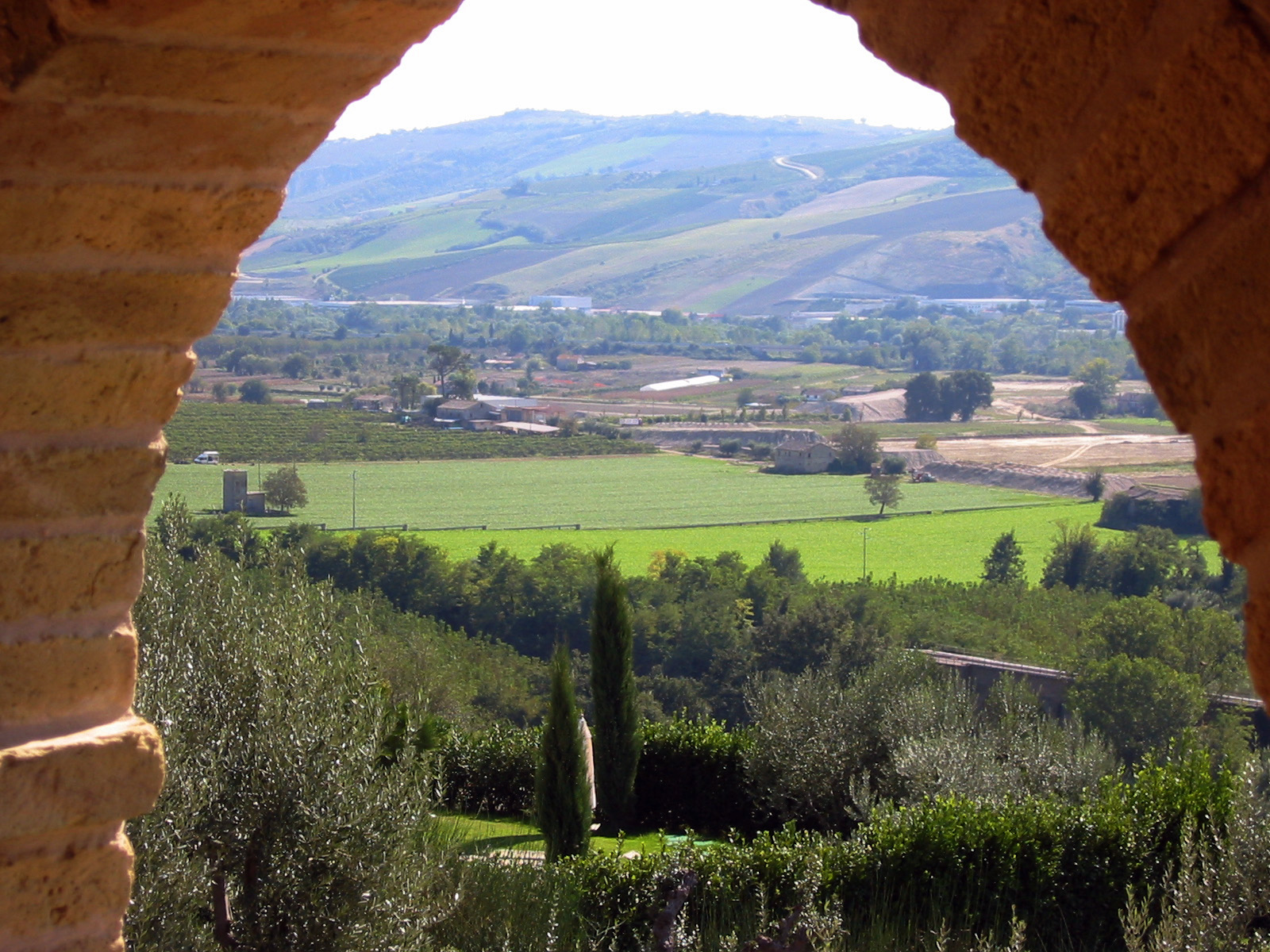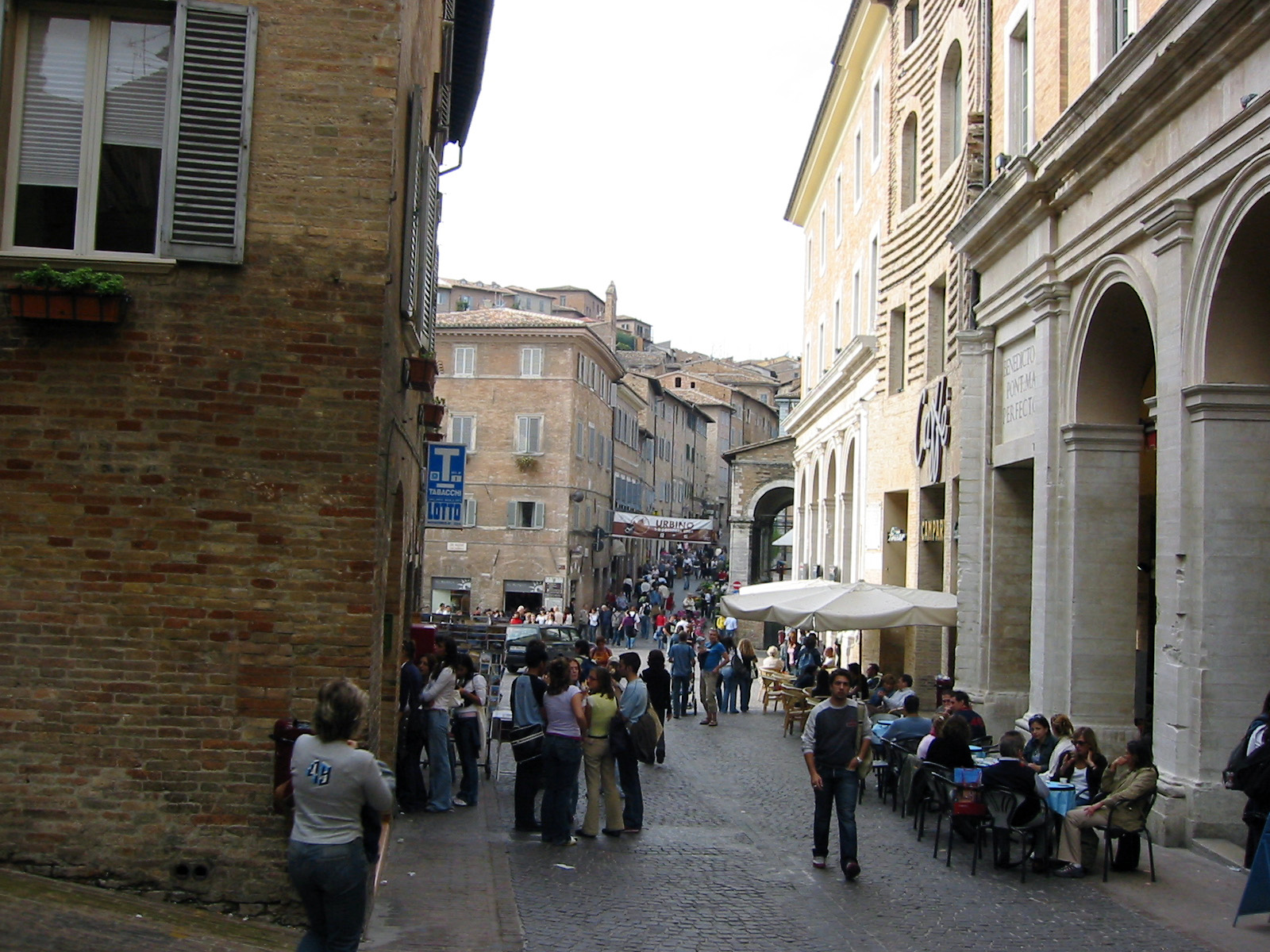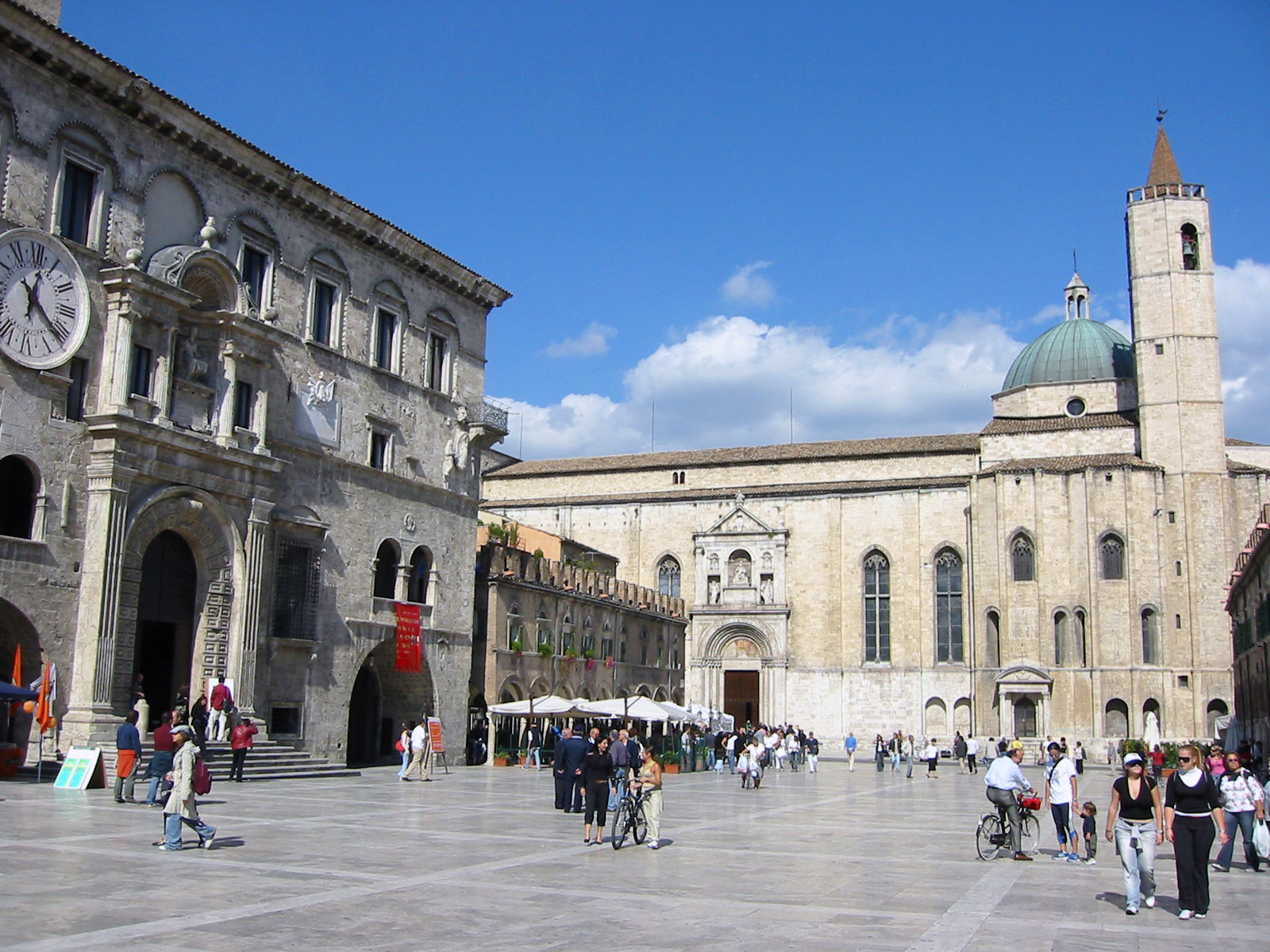 To get from Florence to Ascoli Piceno in Le Marche, go to Perugia, follow the direction to Assisi, then follow the direction to Spoleto. At Spoleto, turn left…. We crossed the Sibillia Mountains, where the Romans believed the prophetic Sybil lived. We passed nearby the Gran Sasso Mountain (big rock) where Benito Mussolini was kidnapped and taken to in 1943 by an ad-hoc government who favored the Allies. We left the autostrada and traveled for hours over an incredibly winding road we referred to as the auto-ileum after it’s resemblance to a large intestine. We were a lovely shade of green when we finally made it down the mountain and into Ascoli Piceno.
To get from Florence to Ascoli Piceno in Le Marche, go to Perugia, follow the direction to Assisi, then follow the direction to Spoleto. At Spoleto, turn left…. We crossed the Sibillia Mountains, where the Romans believed the prophetic Sybil lived. We passed nearby the Gran Sasso Mountain (big rock) where Benito Mussolini was kidnapped and taken to in 1943 by an ad-hoc government who favored the Allies. We left the autostrada and traveled for hours over an incredibly winding road we referred to as the auto-ileum after it’s resemblance to a large intestine. We were a lovely shade of green when we finally made it down the mountain and into Ascoli Piceno.
We booked a room at the Borgo Storico Segretti Panichi, once a 13th century fortress with a lookout from the Sibillia mountains to the Adriatic sea. In 1742, it was turned into a country residence. This is a beautiful Palazzo and hotel and we are the only guests.
The Borgo Storico Segretti Panichi is owned by the Principessa Giulia Panichi Pignatelli Aragona Cortes, a local socialite junior league type with a passion for expanding the world interest in her native Le Marche. Her gardens are so renown, busloads of tourists pay 5€ a head to have a peek.
Principessa Giulia has set up a most complete cultural tourist facility (or finishing school) in the region, with cooking classes, music appreciation classes, Italian language classes, art history, and applied art. Stephania Pignatelli, the daughter of the Principessa, teaches applied art with classes like “Dream and the color Blue” or “Life force and the color Red”. Can you see me smiling??. But as I said, we were the only guests at the hotel and so we never saw any students or school activities. The Principessa Giulia Panichi Pignatelli Aragona Cortes is a very ambitious woman.
Our accommodations are in the newer building. Actually the building is very old, but the renovation was just completed 2 years ago. This a ±650 sq ft suite with a living room, kitchenette, bedroom and an enormous bathroom, even by American standards. The furniture is a top quality, solid wood 19th century reproduction, the chairs, sofas and bed are covered in silk, the bathroom is marble; floors and wall to ceiling. We were told that the cousin of the Queen of England recently stayed in this suite. It’s not only most impressive, it’s very affordable.
 Urbino
Urbino
Many years ago, on my first visit to the Uffizi gallery in Florence, I was fascinated by the Piero della Francesco portraits of the Duke Federico da Montefeltro and his wife Battista Sforza. The brutally broken nose of the Duke has forever immortalized him into Italian history. We’ve been told he broke it in battle, he broke it in a fist fight, and recently, we were told that he actually had the top of his nose cut out so that his helmet would fit better. Now there’s a good story.
 Although Urbino goes back to the 12th century, maybe even older, the city we see now is the kingdom of Federico da Montefeltro. Like many 15th century fortress villages, it’s perched on top of a mountain peak with a splendid view of other mountain peaks or invading armies. As far as I know, 15th, 16th or 17th century Urbino was never attacked, although we did read that Napoleon stole some of Ducale treasures in the 18th century and the Nazis blew up some of the fortress walls towards the end of World War II. The town today has retained almost all of it’s 15th century charm.
Although Urbino goes back to the 12th century, maybe even older, the city we see now is the kingdom of Federico da Montefeltro. Like many 15th century fortress villages, it’s perched on top of a mountain peak with a splendid view of other mountain peaks or invading armies. As far as I know, 15th, 16th or 17th century Urbino was never attacked, although we did read that Napoleon stole some of Ducale treasures in the 18th century and the Nazis blew up some of the fortress walls towards the end of World War II. The town today has retained almost all of it’s 15th century charm.
 The streets are barely wide enough for a motorcycle to navigate, but large enough for 2 gelato shops on every corner, The main attraction is still the Ducale Palace that Federico built in the mid 1400’s. This 3 story, twin turreted Palace is an inspired building, and well integrated into this perfect Renaissance town. Although Federico originally claimed his notoriety as a great soldier for hire, he was also a patron of art and culture, and Urbino flourished as a center of high culture. Some of the original art of the Montefeltri family still lives in the Palace; portraits of Federico wearing his armor with the baby son Guidobaldo at his knee; scenes of the Communion of the Apostles with Duke Federico and his son Guidobaldo looking on from the side, and busts and reliefs of the Duke, complete with the famous broken nose. The Montefeltri line may be gone, but their love of higher education is kept alive through the University that has taken over many of the 15th century buildings. We got lost on the way there and picked up a hitch hiker, who turned out to be a student at the University, studying classical languages.
The streets are barely wide enough for a motorcycle to navigate, but large enough for 2 gelato shops on every corner, The main attraction is still the Ducale Palace that Federico built in the mid 1400’s. This 3 story, twin turreted Palace is an inspired building, and well integrated into this perfect Renaissance town. Although Federico originally claimed his notoriety as a great soldier for hire, he was also a patron of art and culture, and Urbino flourished as a center of high culture. Some of the original art of the Montefeltri family still lives in the Palace; portraits of Federico wearing his armor with the baby son Guidobaldo at his knee; scenes of the Communion of the Apostles with Duke Federico and his son Guidobaldo looking on from the side, and busts and reliefs of the Duke, complete with the famous broken nose. The Montefeltri line may be gone, but their love of higher education is kept alive through the University that has taken over many of the 15th century buildings. We got lost on the way there and picked up a hitch hiker, who turned out to be a student at the University, studying classical languages.
By the way, I still don’t know the real story of how Federico broke his nose.
 Ascoli Piceno
Ascoli Piceno
Where Urbino, in the north of Le Marche has tight twisting roads and rolling hills similar toTuscany and Umbria, the southern Marche is a wide valley sloping down off the Sibillia Mountain range out to the Adriatic. It doesn’t even look like the same country, less the same region. The southern Marche is farm country and zona industriale.
Ascoli P has it is known in these parts is one of those small cities where you have to drive through the catastrophe of late 20th century architecture before you can find the jewel. In this case, we also had the (dis)advantage of driving through the zona comerciale or strip malls. But once we got to the center, we found what we were looking for.
Ascoli P was founded by the Piceni long before the Romans came here, hence the name Ascoli Piceno. The Roman via Salaria (from Rome to the Adriatic Sea) came right through here and the remains of the twin gate (Porta Gemina) that entered to city are still here.
There is a big Renaissance Festival here every summer but we missed it. We’re here in October when it’s much quieter. The festival where thousands of people dress in 15th century costumes is followed by a local sport known as the “Quintana”, a jousting match where 6 costumed knights ride through a jousting course and try to knock down the effigy of an Turkish warrior (15th century Turkish warrior).
 Mostly of what we see in the cento storico was built in the 14th century. The most beautiful part is the Piazza del Popolo (Plaza of the People) made entirely of grey travertine marble from the local mountains. It’s one of the most beautiful squares in Europe. One of the buildings in the square houses the Caffé Melitti, one of the 150 oldest cafes in the world. The interior is done in a beaux arts style, very strange next to the Renaissance architecture, and the coffee is so strong, you can actually chew it.
Mostly of what we see in the cento storico was built in the 14th century. The most beautiful part is the Piazza del Popolo (Plaza of the People) made entirely of grey travertine marble from the local mountains. It’s one of the most beautiful squares in Europe. One of the buildings in the square houses the Caffé Melitti, one of the 150 oldest cafes in the world. The interior is done in a beaux arts style, very strange next to the Renaissance architecture, and the coffee is so strong, you can actually chew it.
You must be logged in to post a comment.